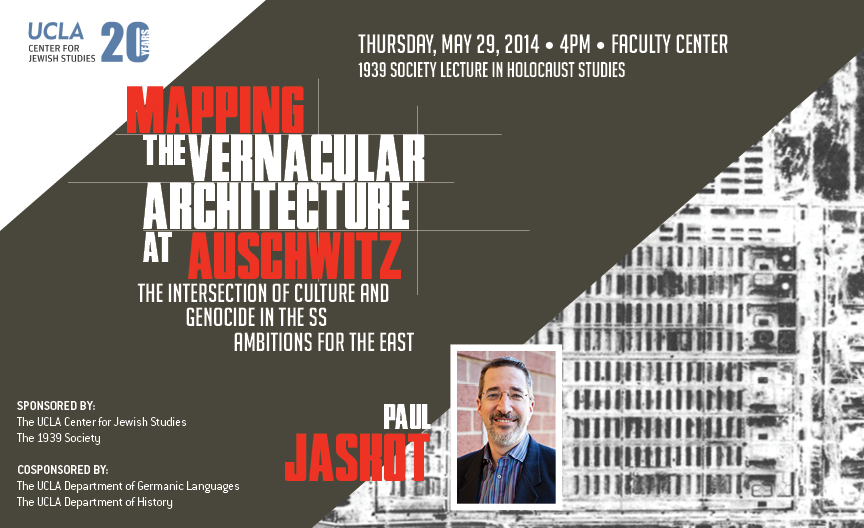
This talk addresses the significant role architects and forced-laborers played in the construction history of the SS concentration camp at Auschwitz. Working (in conjunction with his collaborator, Anne Kelly Knowles) from the massive archive remaining from the SS building office as well as extensive digital visualizations of the space, Jaskot focuses on how the cultural goals of the SS related spatially and functionally to the destructive development of forced labor practices and the genocide. How do digital tools help us deal with the massive human and geographic scale of the site? What might a focus on the vernacular architecture and the SS architects tell us that challenges or expands the history we already know of the camp? In sum, this presentation seeks to argue for the need for a more comprehensive approach to space to understand this important site of the Holocaust.
About the Speaker: PAUL JASKOT is a professor in the Department of the History of Art and Architecture at DePaul University and he has begun to develop classes on the burgeoning field of digital art history. His specific area of research has mostly focused on the cultural history of National Socialist Germany and its postwar impact on art and architecture. His classes and his scholarly work tend to focus on the central art historical question of how art and politics intersect in the modern world. He has published a number of essays that explored the political function of architecture in the modern period, leading up to his most recent book The Nazi Perpetrator: Postwar German Art and the Politics of the Right (Minnesota 2012). In addition to his research, Jaskot has served as a member of the Board of Directors of the College Art Association, the U.S. professional group for artists and art historians. From 2008-2010, he was the President of CAA.